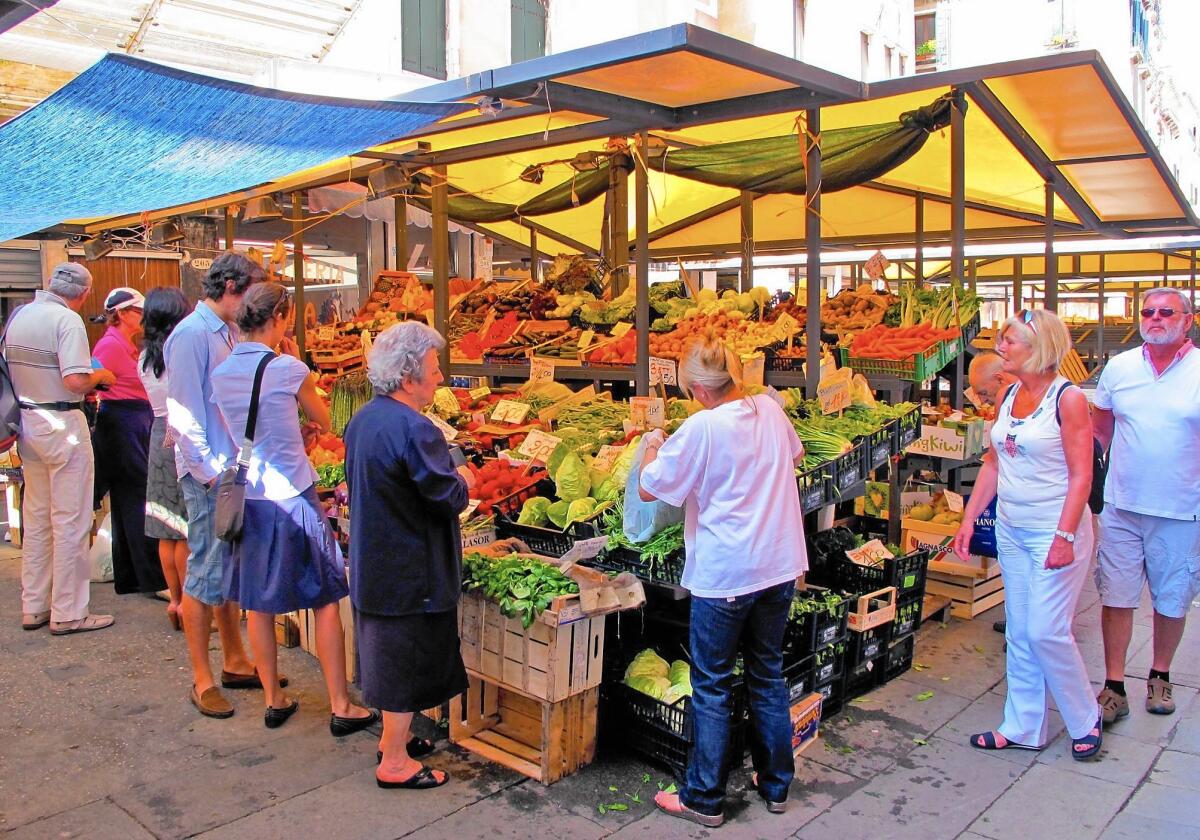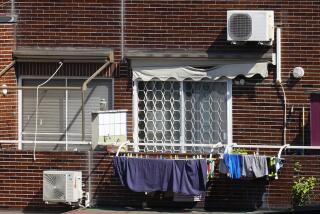In Europe, little refrigerators hold a grand reason for less waste

- Share via
Years ago, when I first started traveling to Europe and was welcomed inside people’s homes I was astonished by the extreme simplicity of the kitchens I saw.
The rooms weren’t necessarily small, but they were filled with people — not appliances. Barely even a refrigerator. Invariably there was enough room for a table in the center of the room that served as a prep then dining space. The stove was sometimes just a couple of burners attached to a propane tank ,and the refrigerator, well, it was the size of what we now call a “beverage refrigerator.” The kind you see in dorm rooms everywhere.
Of course, I made fun of them. Didn’t they know the convenience of stocking a giant refrigerator? And yet everyday people shuffled through those kitchens, making stove-top espresso, settling in to read the paper with a cigarette, making a seemingly effortless fish stew.
What stuck with me, beyond the jokes, was the frugal way people lived that allowed that tiny fridge to be enough. It was a kind of forced efficiency that led to very little waste. Instead of weekly trips to the supermarket, grocery shopping was an activity folded into the rhythm of daily life.
Even now, 40 years after those first trips to Italy, for many folks daily shopping isn’t a big expedition but rather something you do as you wend your way to lunch or home from work. You think of what you need tonight or tomorrow, and that’s really it.
Now, I’ll admit that this is a whole lot easier to do when you live in a compact urban center like Rome or Paris, and your omnipresent string or plastic bag stuffed into your purse or briefcase tells you when enough is enough. If you can’t carry it home, the foodstuffs aren’t finding a way into your refrigerator.
This rhythm was served by the culture of tiny specialist food shops in every neighborhood — and, yes, even in Europe, sadly this is eroding. It was easy to stop at one shop for bread and a bit of cake (you didn’t have to buy a whole cake), at another shop for some cheese and butter, and yet another for fruit and vegetables. I noticed something else too: The bag of trash we carried down the street to toss into the community bin was tiny. There were egg shells, fruit peels, meat bones, wine bottles, the random cheese rind and a bit of packaging. It all fit into the kind of plastic bag we’ve recently outlawed.
Most of us Americans who visited embraced what we saw as a quaint European tradition — and then were happy to return home to our comfortable abundance. But over the decades that abundance has morphed from some of us having enough to having way too much while others don’t have enough. We drive our giant American cars to our giant American supermarkets to pick up food in giant packages that end up in giant refrigerators.
But that abundance often translates to excess, which in turn translates to waste — a massive amount of waste, as exemplified by our massive refrigerators.
I used to have a massive refrigerator too. For over 30 years as a chef, I had a walk-in refrigerator at my restaurant. Forget about a walk-in closet; you haven’t lived until you’ve had a walk-in refrigerator filled with food.
But I don’t need to stock my home fridge like I stocked my restaurant walk-in. After years of feeding hundreds of diners every night, I still buy too much, but I’ve turned a corner. Now it’s a game to see how long I can go between restocking. I’m saving money because I buy less. And I waste less.
It’s all about managing that tension between the comfort of abundance and the worry about having enough. A little planning helps for those who aren’t intuitive cooks as opposed to randomly overstocking in hopes of having what you need. Be honest with yourself about how often you’ll eat dinner out or bring something in. Learn to love what I call “garbage salads,” in which you combine those bits and pieces of leftover cooked proteins and vegetables with crunchy raw ingredients and a good sharp dressing. The sandwich is also the perfect vehicle for creative use of leftovers. Spaghetti sauce mayo, anyone?
But it comes down to awareness. Once you decide that you’re done with throwing your money and water away, you’ll be surprised at how quickly your behavior starts to adapt. Because it’s not really about the refrigerator; it’s about what you put in it — or don’t.
Kleiman ran Angeli Caffe for 27 years. She’s the longtime host of KCRW’s “Good Food.”
More to Read
Eat your way across L.A.
Get our weekly Tasting Notes newsletter for reviews, news and more.
You may occasionally receive promotional content from the Los Angeles Times.










